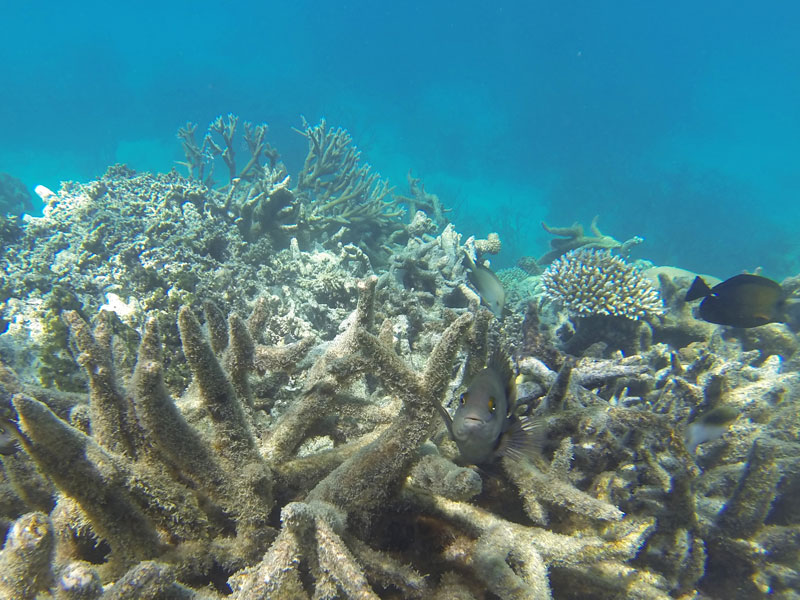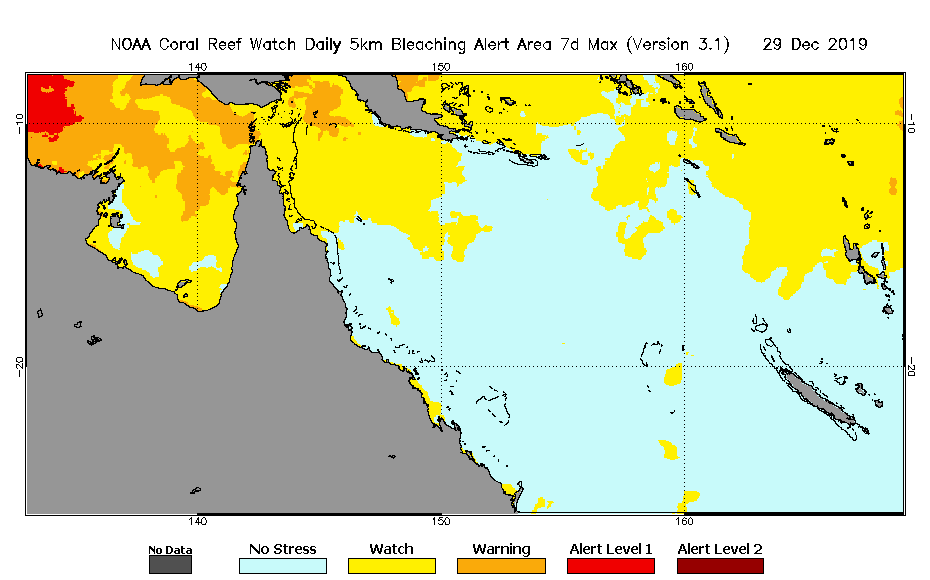
29th March 2020 Third mass coral bleaching event in five years A third mass coral bleaching event in five years has been recorded at the Great Barrier Reef, Australia.
The Great Barrier Reef Marine Park Authority (GBRMPA) – Australia's lead management agency for the Great Barrier Reef – this week confirmed that mass bleaching has occurred on the Great Barrier Reef, with very widespread bleaching detected. The agency's latest information is based on both aerial and in-water observations. Further analysis will continue over the coming weeks, providing a full picture of the extent and severity. This event follows the hottest year on record in Australia, at 1.52°C above the 1961–1990 average, surpassing the previous record of 1.33°C in 2013. Observations from the aerial surveys over the vast area of the Reef, some 344,000 square kilometres, confirm the worst bleaching is on reefs that suffered the highest heat stress this summer, which extended across large areas. Some southern areas of the Reef that had little or no bleaching in 2016 and 2017 have now experienced moderate or severe bleaching. The findings are backed up by separate observations from the U.S. National Oceanic and Atmospheric Administration's (NOAA) Coral Reef Watch. This map shows abnormally hot ocean temperatures that began in late January and stretched into mid-March – by which time, almost the entire reef was under a bleaching alert.
"If we do not deal with climate change quickly ... we are going to continue to see more severe and more frequent bleaching, and we are going to see the loss of coral reefs around much of the world," said Dr. C. Mark Eakin, coordinator of NOAA's Coral Reef Watch. "The upper ocean has absorbed a tremendous amount of heat in recent years, and it has really put coral reefs around the globe much closer to their upper thermal limits." Coral reefs are some of the most important marine ecosystems on the planet – despite covering less than 0.1% of the world's ocean floor, between a quarter and one-third of all marine species rely on them at some point in their life cycle. Worldwide, the livelihoods of 500 million people are dependent on coral reefs. Mass bleaching events last occurred in 2016 and 2017. Scientists fear that if ocean heating continues on present trends, these devastating impacts could be an annual occurrence by the 2030s. Without action, the entire Reef could be essentially dead by 2050. The Australian Government has allocated $1.9 billion to protect the Great Barrier Reef through world-leading science and practical environmental outcomes to support the Reef 2050 Plan, in conjunction with the Queensland Government. Additional investments are being made to protect coral cover and these include crown-of-thorns starfish control, water quality programs, marine science, state-of-the-art monitoring of reef environments and reef adaptation. One possible solution is 3D-printed coral. A recent study by the University of Delaware showed that 3D-printed coral can provide a "structural starter kit" for recovering reefs, without negatively affecting vulnerable fish and other marine species.
Comments »
If you enjoyed this article, please consider sharing it:
|








